If you are just tuning in, check out our past newsletters to catch up on our adventure of finding, buying, and restoring a 200-year-old home in Montalcino.
Good progress is being made in Montalcino. Before we left in January, we asked our team to keep us updated and to reach out with any questions or decisions. As contractors ourselves, we understand the many challenges that arise on a job site. We’d much rather know about and participate in problem-solving any hiccups than learn of issues afterward.
To our genuine pleasure, they have taken that to heart. Stefano speaks with our general contractor almost daily, and photos documenting progress regularly pop up in our WhatsApp chat. We’re itching to return, but until then, we are reassured that our crew is doing good work and moving the project forward.
Arches & a secret passageway
Two large arches on the back side of the house once led from the yard to the two lower-level stables. However, they were walled in at some point in the home’s history. As part of the plan to convert those stable rooms into the kitchen, dining room, and wine cellar, the arches will be opened up to become direct entrances to the home from the garden level. With all cultural preservation approvals in hand, the time has finally come to open up those arches!

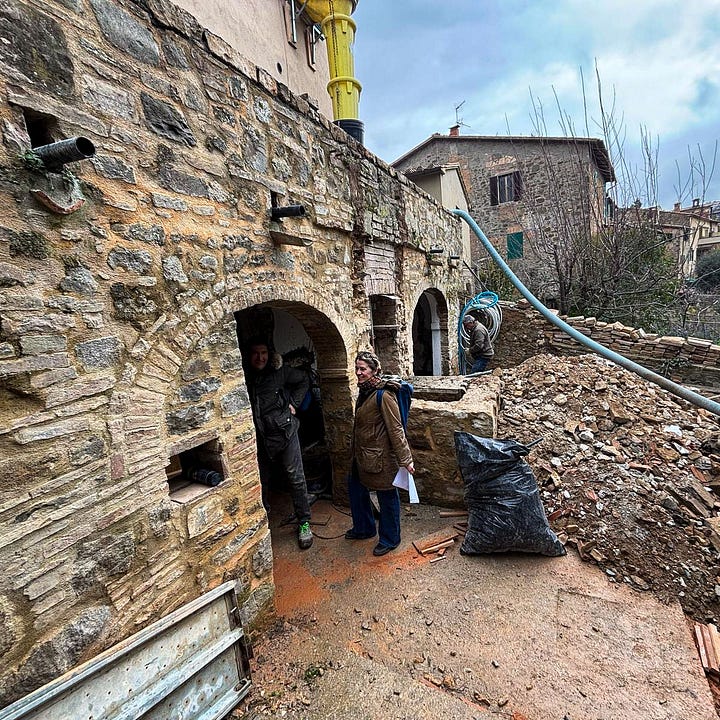
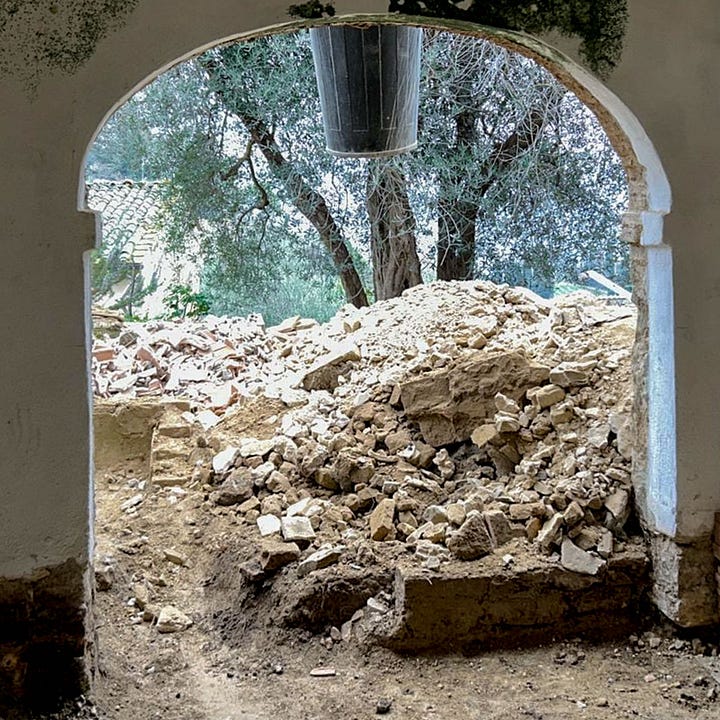
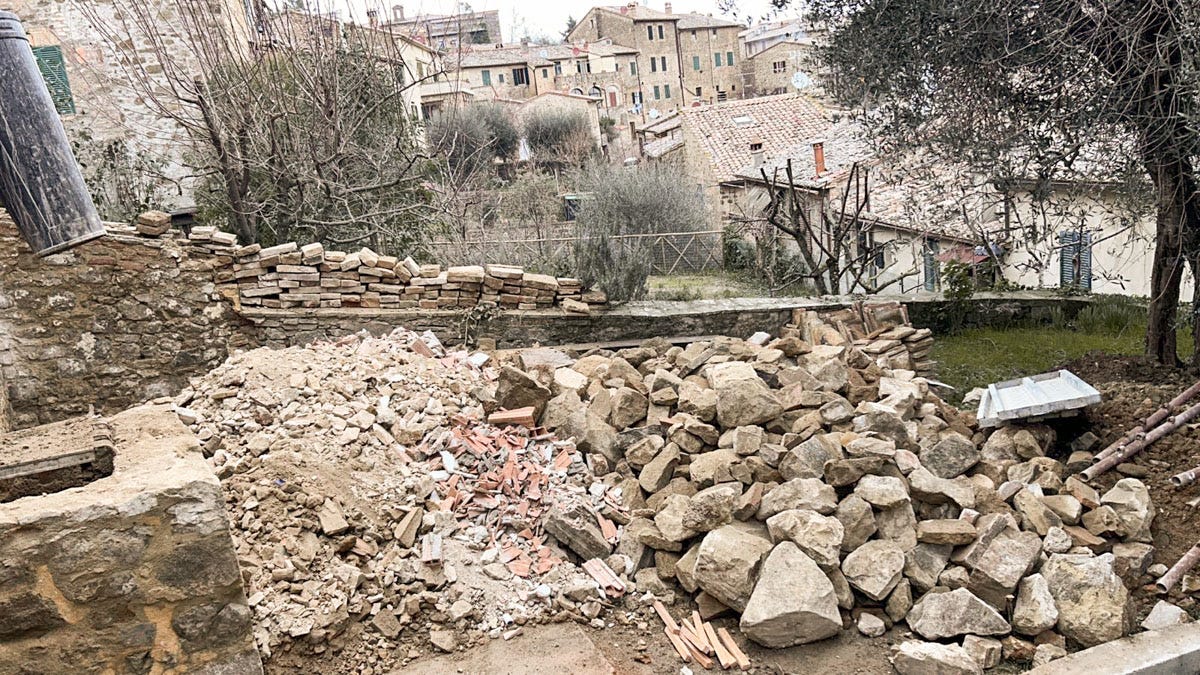
A few months ago, Massimiliano, our contractor, suggested we remove the plaster and leave the rock exposed on the wall going upstairs. Since then, enamored by the rustic look of that wall in roccia, we’ve decided to leave exposed rock on a few other walls, as well, including the entire dining room and wine cellar.
One morning, while we were both at work, Stefano texted me a picture, with the message, “c’è un arco.” There is an arch.
The picture showed a rock wall with a distinguishable, small arch embedded into it. Hmmm…
Arches, a common feature of ancient Roman architecture, provide structural support and load-bearing capacity by transferring weight outward and downward. They were the precursors to the modern-day header. That arch was not there by chance or for decoration. Once upon a time, it was an opening to something.
“Dov’è?” I texted back. Where is that?
“In cantina,” Stefano replied.
The cantina is Stefano’s wine cellar. He plans to enclose the dining room's back wall behind glass to create a temperature- and humidity-controlled space to store and display his wine collection.
The dining room is a lower-level walk-out. As such, that back wall, which is street-side, is entirely underground. There must have been a tunnel or a passageway there.
Stefano asked Massimiliano where he thought the tunnel went. Massimiliano shrugged, and said chi lo sà? (who knows?). He noted that you encounter all sorts of things in medieval villages like Montalcino. We chuckled because the most logical place for it to lead was to our neighbor Mariano’s house, right across the street.
Stefano asked Massimiliano if they could dig a small niche underneath the arch and run electrical wiring there. It would be a really cool place to display important bottles.
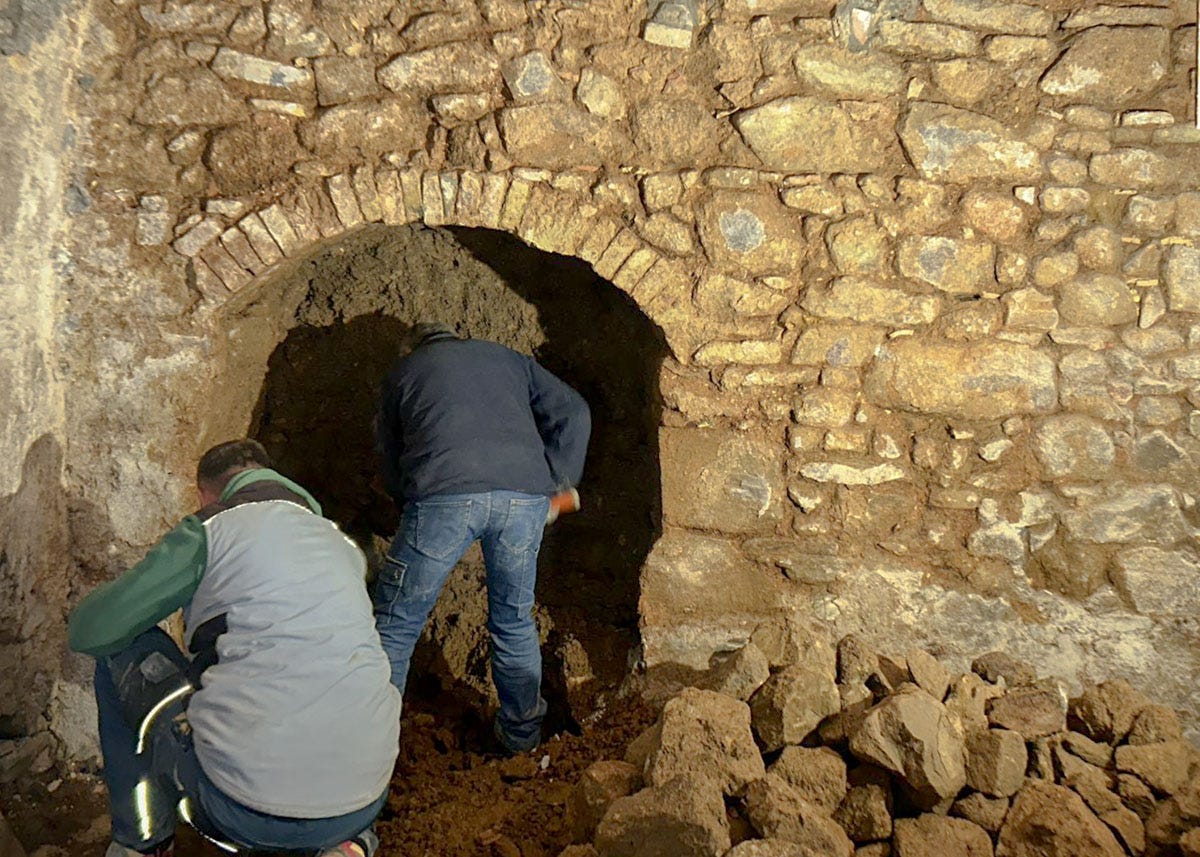

A shot of espresso and a jolt of inspiration
We are moving the kitchen to the lower level and love that it will open to the backyard, allowing for indoor-outdoor dining. However, we’ve struggled to decide what to do with the ceilings. Those lower-level rooms don’t have the pretty wood beams of the upper floors. Instead, cement support beams called travetti, spaced about two feet apart, travel the length of the ceilings. Plastering over them and painting them white seemed like our only option. We weren’t in love with that solution, though.
Then, one afternoon, while having a caffè at Bar Belvedere in Montalcino, Stefano lifted his espresso cup to his lips, tipped his head back, and had an idea. Setting his cup back on the bar, he elbowed me and pointed to the ceiling. I looked. It was made of volticelle, a series of small barrel vaults trimmed in terra cotta tile. It was lovely.
“What if we ask Massimiliano if he can make the kitchen ceiling look like this?” Stefano asked.
That would be terrific. It would probably cost a fortune, though. We keep adding on to this project. At this rate, we will need to work until we are 100 years old to pay for everything. It was the perfect solution, though.
“Let’s ask him,” I agreed.
It was possible, and it was not as expensive as we feared. We ordered the terra cotta and they got started right away. As the guys made progress, Massimiliano sent us pictures.
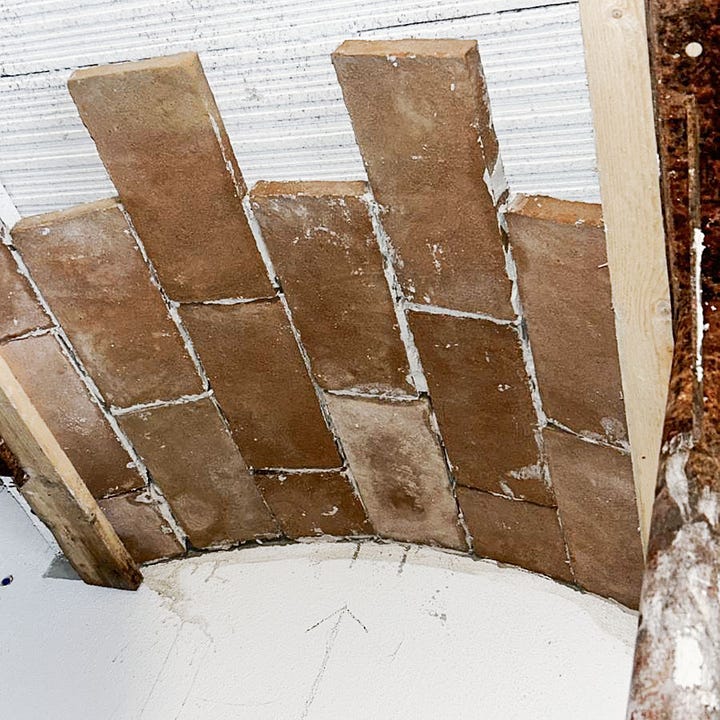
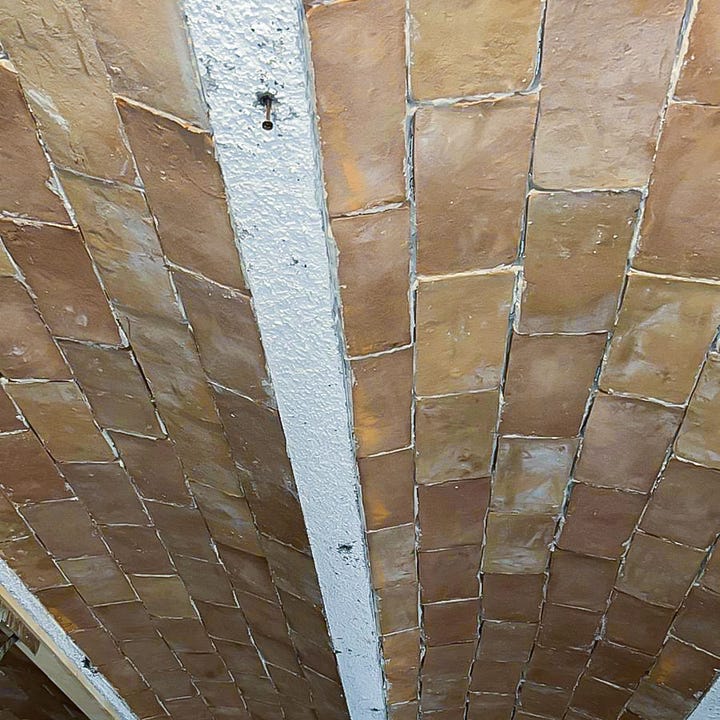
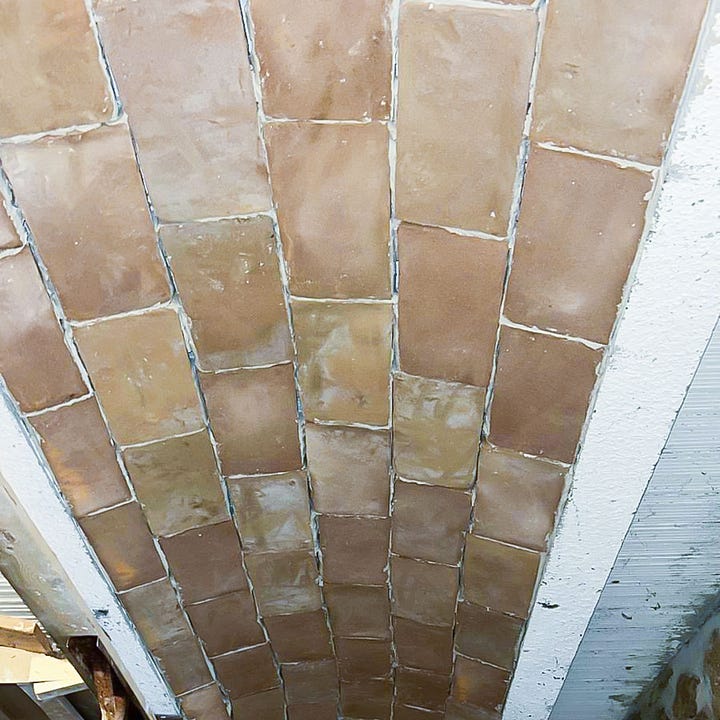
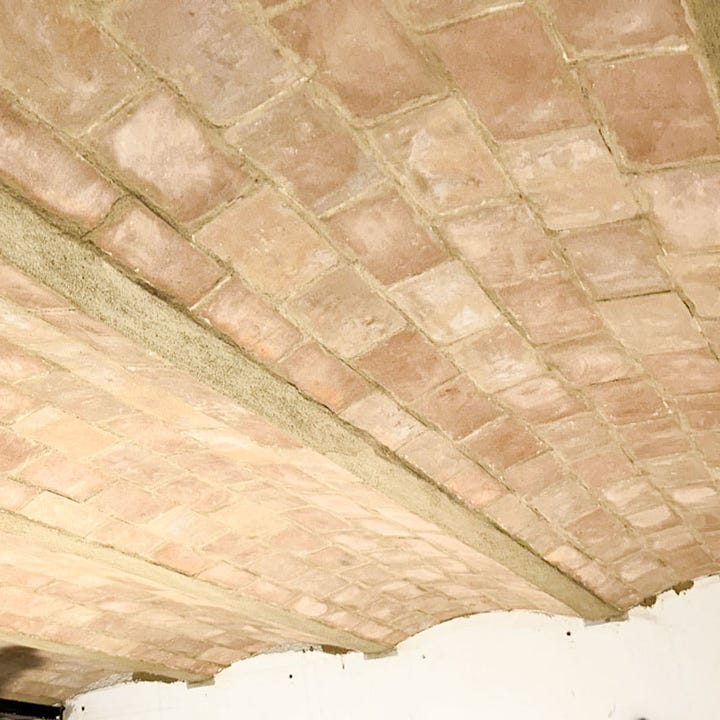
Let there be light!
We decided to take on this remodel ourselves, without hiring an architect or designer. We know the industry, are comfortable speaking directly with our contractors and subcontractors, and are confident our style and taste.
The one area that has been causing us some distress, though, is the lighting. A core principle of good lighting design is layered lighting: each room should have ambient, task, and accent lighting. I know how to do that in a modern American house with 2x4 construction and sheetrocked walls and ceilings. I don’t know how to do it in a two-hundred-year-old house in Tuscany with exposed rock walls and beamed ceilings.
Good lighting makes a huge difference. We want to get it right, but aren’t sure we are up to the task. The electrical rough-ins were about to begin, though, so we needed to make some decisions. Gabriele, our geometra, offered to put us in touch with a lighting architect he works with often.
“She is very good,” he said, “and will work within your budget.” He added, “She is on top of things and you can be sure she will not drop the ball. I want to warn you though; she is precise and detail-oriented to a fault. If you decide to work with her, you should be prepared for a LOT of communication.”
That sounds amazing, I thought to myself. A step ahead of me, Stefano smiled and said, “She and Cara will get along just fine.”
Speaking of light, the house will have more natural light, as well. The two new widows have been opened on the back side of the house, and one window from the main floor bedroom has been turned into patio doors with direct access to the terrace. They all overlook the Val d’Orcia.
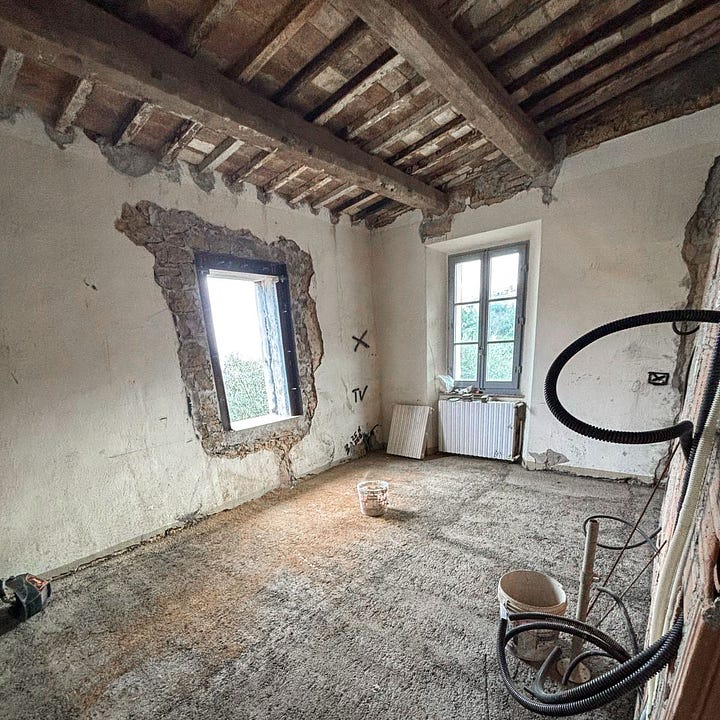
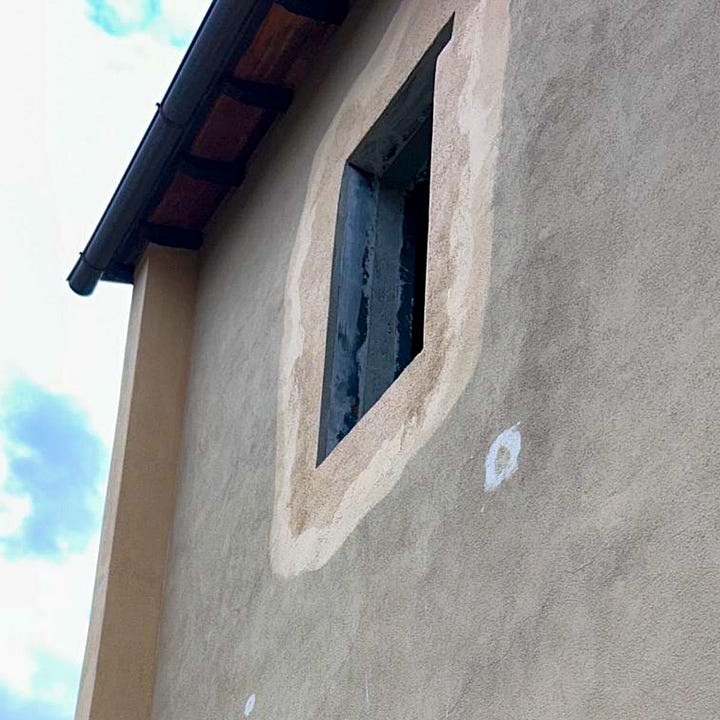
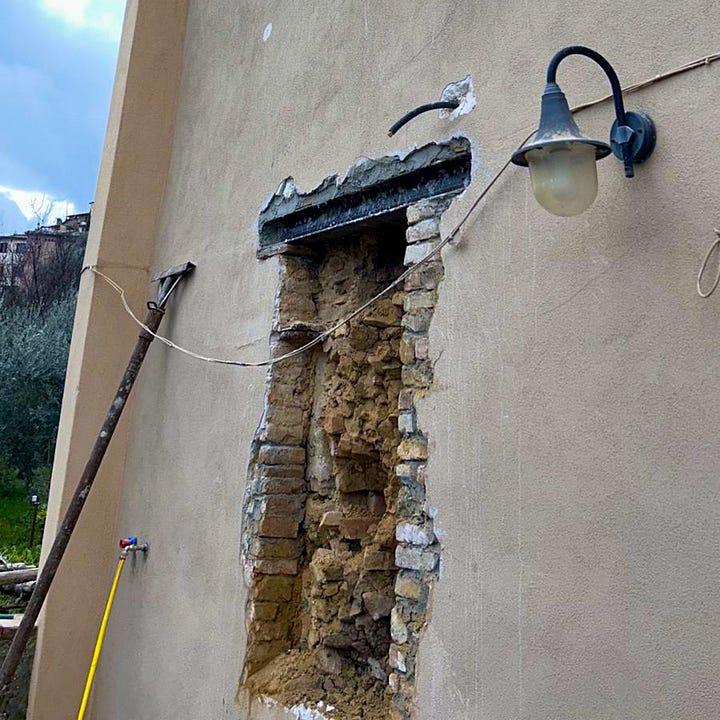
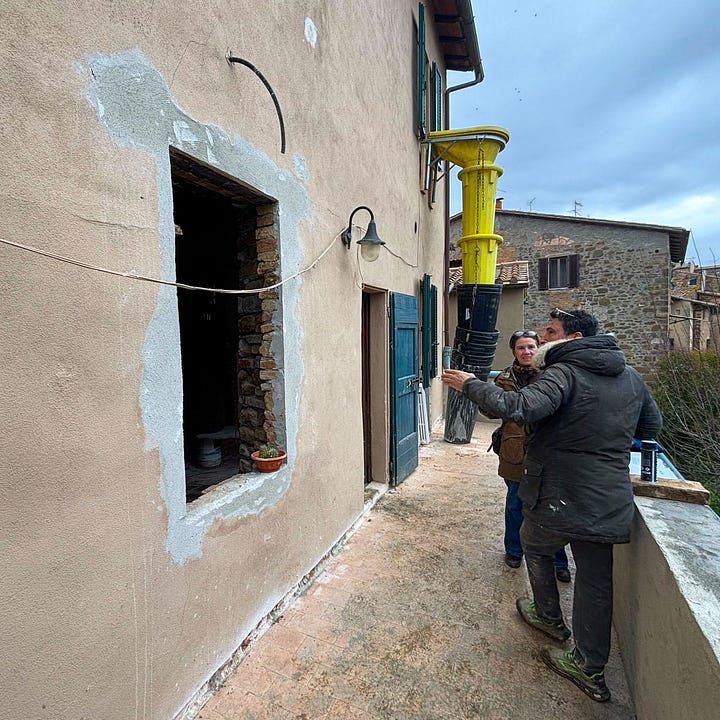
About Montalcino
Montalcino is a medieval town of approximately 6,000 residents, located about 25 miles south of Siena, 85 miles south of Florence, and 145 miles north of Rome. Perched on a hill in the heart of the world-class Brunello di Montalcino wine-producing region, Montalcino has scenic views of the olive groves and vineyards of the surrounding countryside. Visitors come from all over the world to enjoy the town’s cultural events and to experience its wine tourism. It’s long been one of our favorite places to visit.





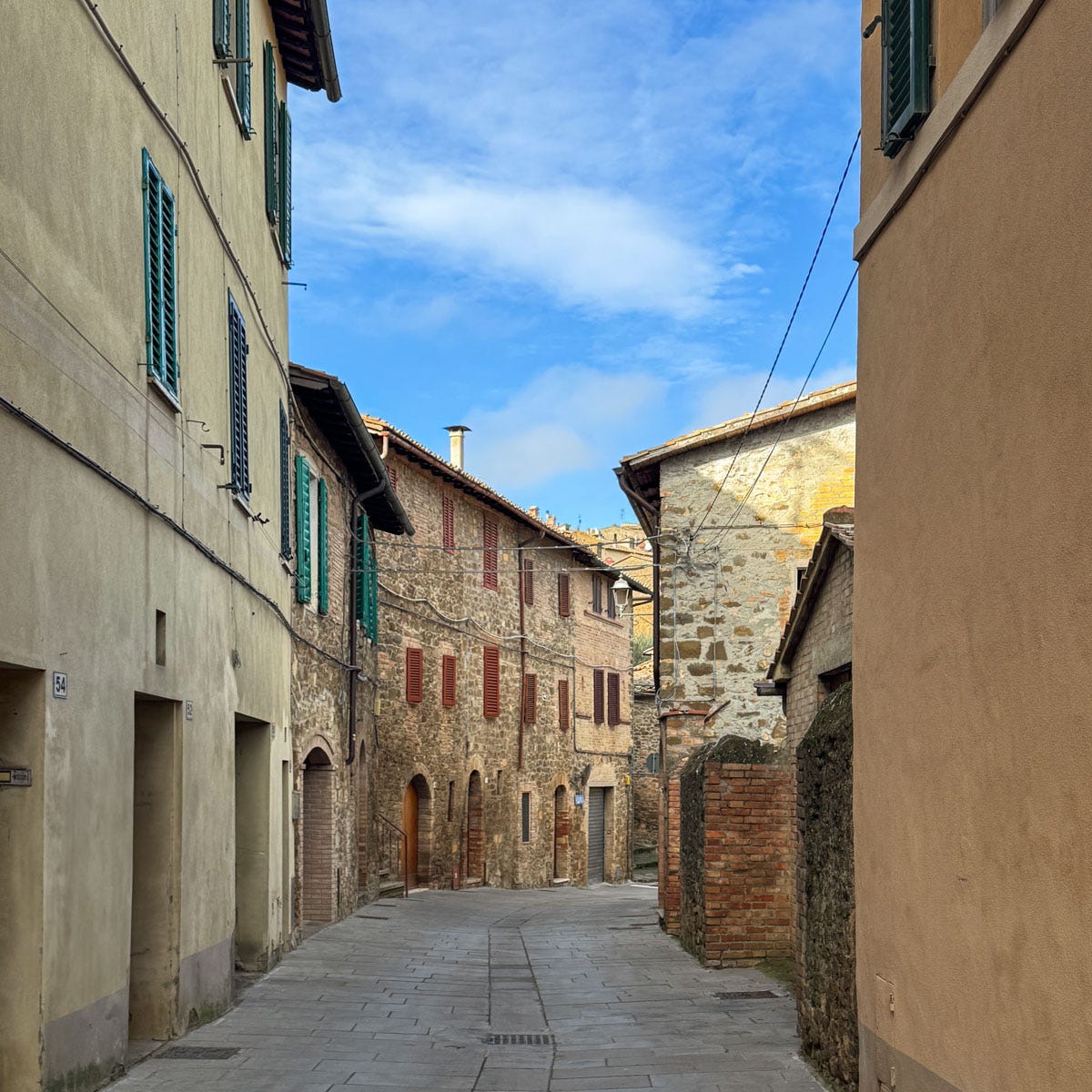

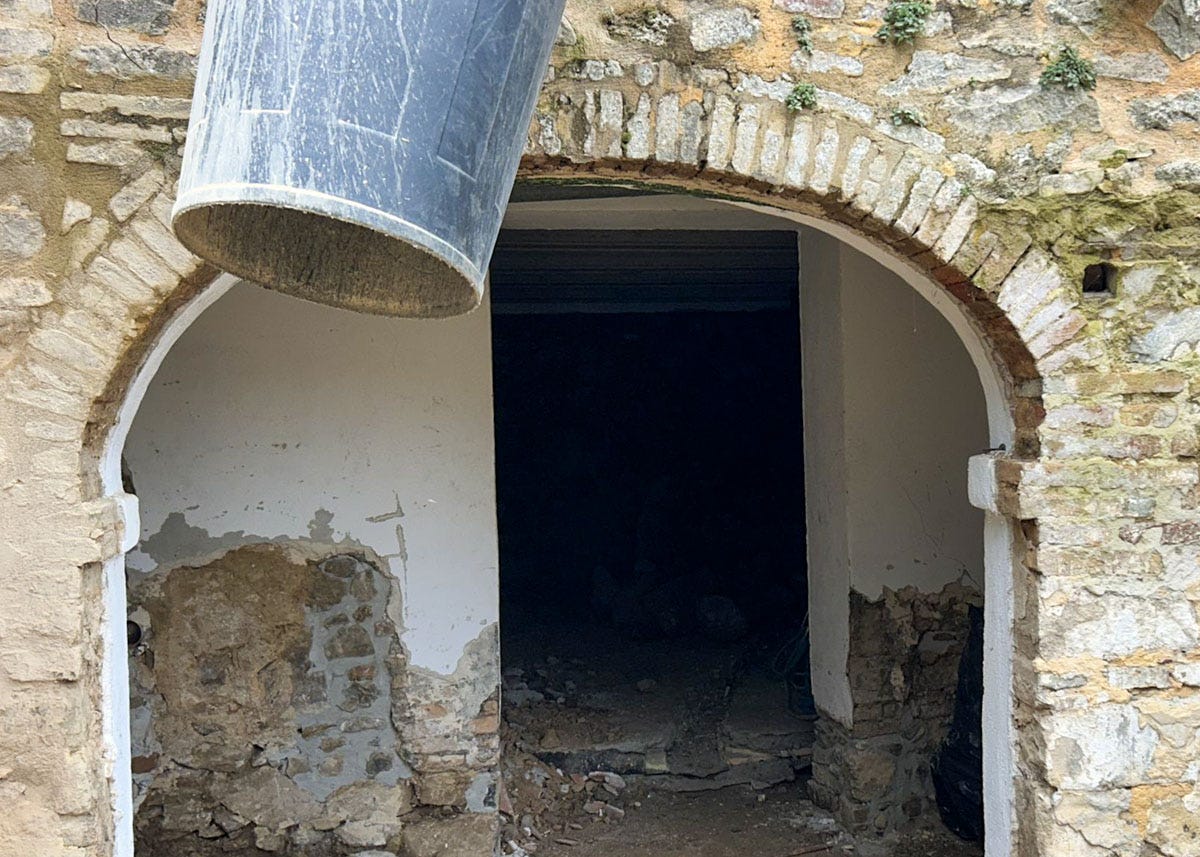
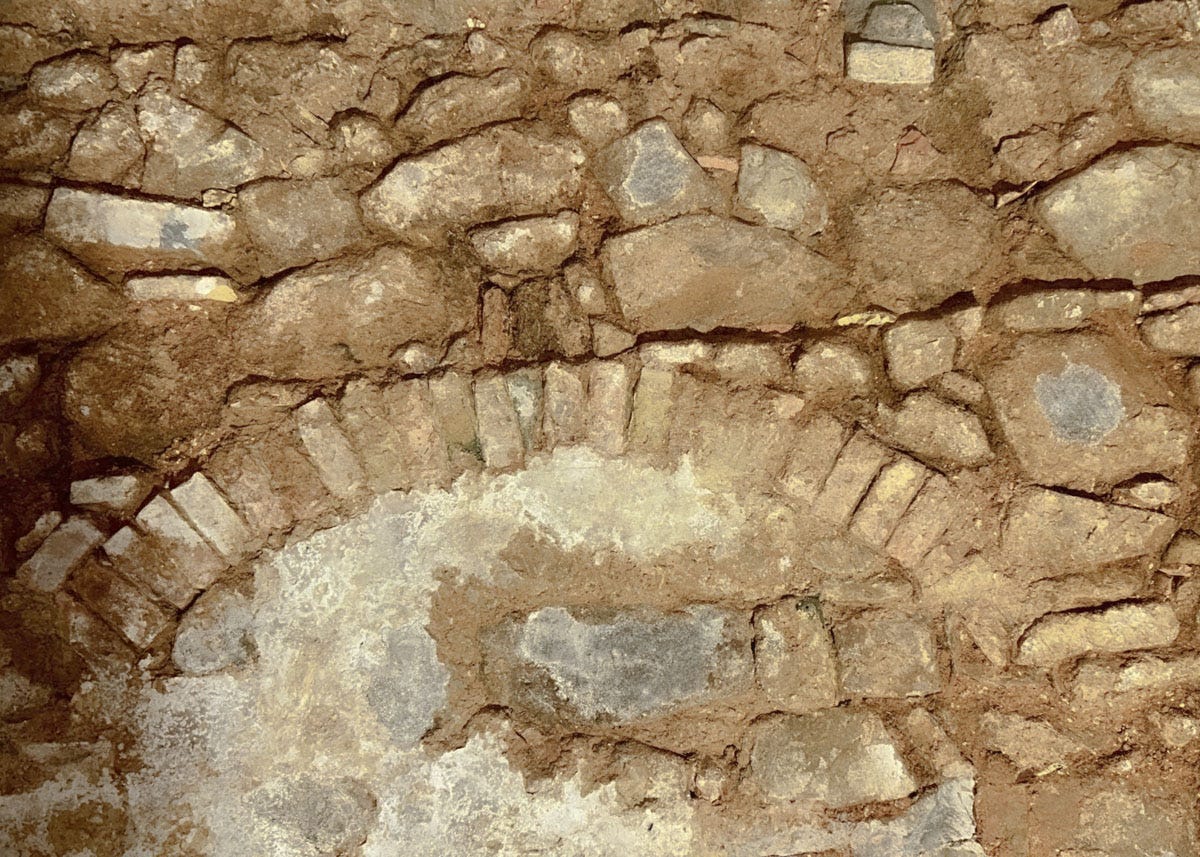
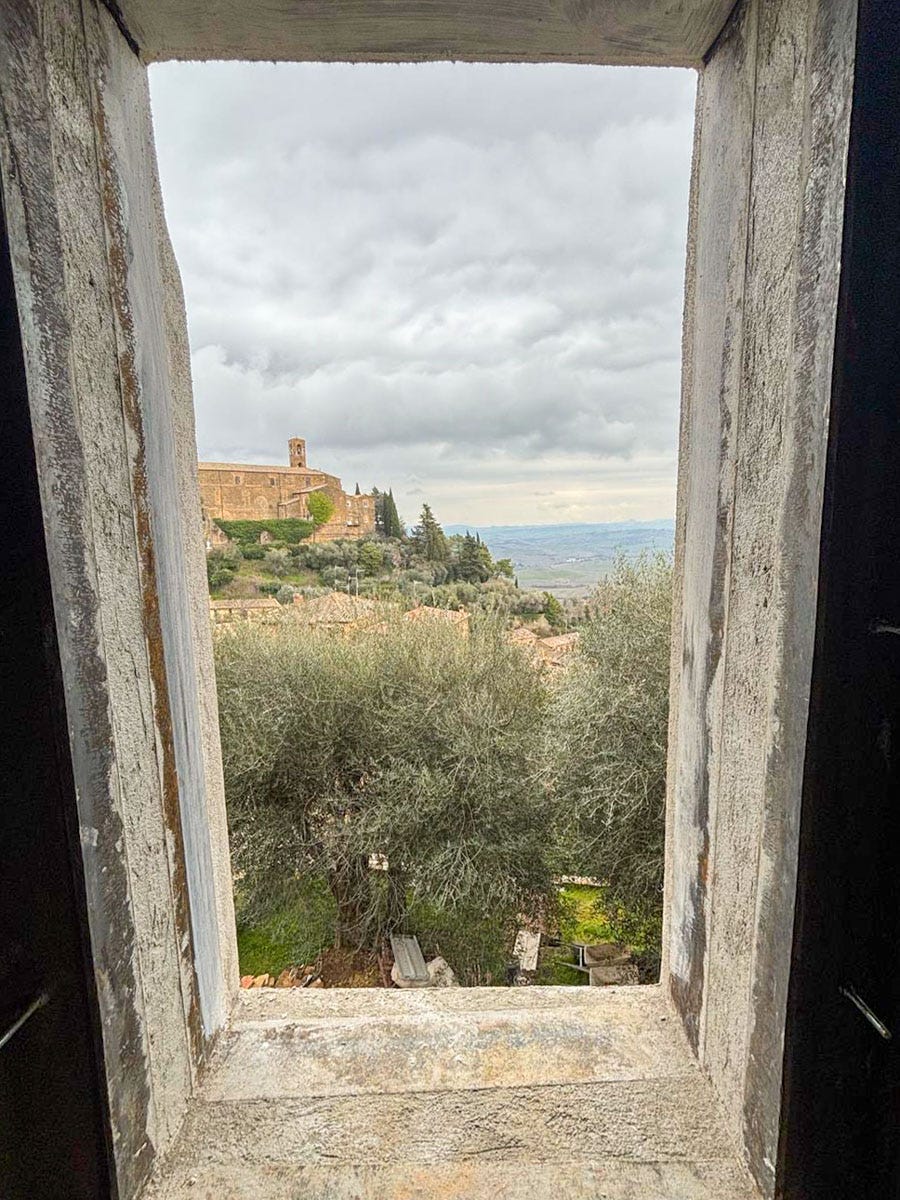
I spent a bit of time in Montepulciano. Loved it. Not far from Montacino.
That was a wildly exciting read! So much fun!